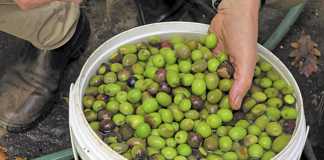Capturing and storing – sequestering – carbon in soil helps cancel out greenhouse gasses and it’s a service farmers should be able to sell. Currently, carbon credits from industrial sources are widely traded, but soil carbon generally hasn’t been a marketable commodity. At present prices, assessing, selling and monitoring carbon credits is often uneconomical, especially for small-scale farmers.
Late last year, an international workshop brought together experts in fields from the soil science and economics to help make conservation agriculture (CA) practices pay off for farmers, and create fair-priced carbon offset markets for them. Called the Conservation Agriculture Carbon Offset Consultation, the workshop was hosted by the Conservation Technology Information Centre (CTIC) and the United Nation’s Food and Agriculture Organisation (FAO) at Purdue University in Indiana, US.
“To create working markets for farmers’ carbon-capture efforts, we need to understand how carbon acts in the soil, and the science of no-till systems,” stressed Karen Scanlon, executive director of CTIC. “We can then quantify the effect of specific practices on specific soils, and create a fair compensation structure.”
Soil type and capacity
Researchers from the South American tropics, the Australian bush, the Midwestern US and China presented their studies on how various cultivation regimes affect soil carbon levels. Unsurprisingly, there were no simple answers. Changes in organic soil carbon over time are small. Soil can only sequester a limited amount of carbon a year, and after a certain period – scientists believe about 15 to 20 years – it reaches a plateau. Soil’s carbon storage capacity depends on soil type, tillage system, the use of cover crops, cropping history and how much carbon was lost in the first place.
South American research with highly degraded soils showed dramatic jumps in carbon levels after five years – much higher storage levels than Midwestern soils in the US. Deep-rooted pasture plants also placed carbon more deeply into poor South American soils than annual crops did in richer soils in cooler climates. But US Corn Belt farms can still capture and store significant amounts of carbon. “The higher the clay content, the more carbon storage capacity,” said Dr Charles Rice of Kansas State University.
Carbon storage on the farm
The less tillage used, the more carbon sequestered, many scientists said. The data showed tillage burns soil carbon and releases greenhouse gases. The amount of crop residue required to rebuild soil carbon also varied widely. Dr João Carlos de Moraes Sá of the University of Ponta Grossa in Brazil found tropical Brazilian soils consume 9t/ha to 14t/ha of crop residue yearly, while Dr Rice’s studies showed 3t/ha of residue was enough to increase soil carbon in Kansas.
In Brazil, Prof Telmo Amado of the Federal University of Santa Maria plants corn and the deep-rooted perennial pasture grass called Brachiata together for great sequestration results. Tightly planted corn grows quickly, while shaded Brachiata sends roots deep into the soil, creating a tremendous amount of biomass both above and below the ground – a cash crop, a grazing opportunity and plenty of residue for carbon-fixing microbes.
But just growing biomass isn’t enough, says Prof Amado. After the carbon is introduced, it must be stabilised. “Physical and chemical protections are important,” he noted. The soil surface must be protected with plenty of residue, soil structure must be maintained by no-till or minimal tillage, which also keep soil microbes healthy, crops must be adequately fertilised, soil compaction avoided and crops rotated. “It’s really site-specific, and we need to understand the cropping system we’re talking about,” said Prof Amado.
Making it pay: the markets
Building soil carbon delivers a range of benefits, from improved soil quality to increased water-holding capacity, higher fertility and resistance to erosion. Still, the biggest incentive for farmers will be markets where they can earn money directly, says US farmer Dale Enerson, director of the Carbon Credit Programme for the National Farmers Union in Jamestown, North Dakota.
The union has served as an aggregator of carbon credits, collecting pledges from 3 700 US growers to sequester carbon on 1,9 million hectares of crop land and range land, and selling the bundle of carbon credits on the Chicago Climate Exchange (CCX). Growers received an average US,20/t (R11,89) for sequestered carbon.
Official CCX estimates for carbon sequestration range from 0,49t/ha to 1,48t/ha on no-tilled crop land, 2,47t/ha on long-term grassland and 0,3t/ha to 1,3t/ha on range land with enhanced management practices. In a pioneering carbon offset trading programme in Alberta, Canada, 47% of the offsets are from agricultural land, and on the CCX, 25,52% have been bought from farmers.
Making soil carbon marketable
“There has to be a fair-price incentive for farmers, and current prices aren’t going to do it,” said Prof Rattan Lal, director of the Carbon Management and Sequestration Centre at Ohio State University. Voluntary markets have kept the value of sequestered carbon low – CCX prices have ranged from US,90/t (R8,95/t) to US,50/t, (R74,68/t) and Alberta prices have ranged from US/t (R59,73/t) to US/t (R119,48/t).
However, in a free market where buyers are motivated by caps on the emissions they can produce, prices could reach US/t (R646,77/t) by 2020, argues Don McCabe, an Ontario farmer and vice-president of the Soil Conservation Council of Canada. In Canada, provincial carbon offset trading in Alberta and Saskatchewan is paving the way for nationwide caps on industrial greenhouse gas emissions, which will kick in on 1 January 2010.
This will boost the market for tradable carbon credits, and farming can be part of the package. To prepare soil carbon credits for a full-scale, regulated market, policy makers must sort out an array of issues, ranging from how long the contracts should be, whether it’s the operator or the landowner who owns the carbon, how practices are verified, and how to handle contract violations when operators release carbon by disturbing the ground. But, believes McCabe, “These issues can be worked out by working together.” Further information on the conference, no-till farming and carbon sequestration is available at CTIC’s website, www.conservationinformation.org.
Double benefits of conservation agriculture
At current prices, carbon credits may not be viable to many farmers, but combined with the other benefits of conservation agriculture (CA), the expense is more than justified. In his presentation Richard Fowler, one of the two African speakers at the conference, emphasised that our continent is bleeding to death. Megatons of topsoil washes out to sea every year due to soil structure degraded by ploughing, and CA is a cost-effective, environmentally friendly alternative, he argued.
Based on minimal soil disturbance, maximum soil cover and multicropping (preferably rotational), CA not only sequesters carbon but also reduces soil and water losses. If farmer groups and co-ops go the CA route, the profits could be used to establish CA advisory and promotional services to improve profits and reduce collective overheads, while society would benefit from reduced atmospheric carbon dioxide.












